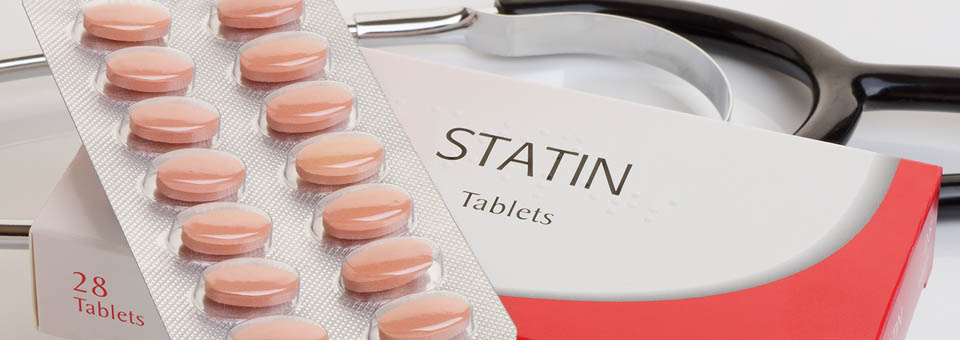I’ve been warning for years that statins sharply increase your risk of Type 2 diabetes. Now the connection is undeniable thanks to a new study.
Researchers at Vanderbilt University analyzed data from 53,385 adults, correlating statin use with adult-onset diabetes. Their main finding: For each statin-related 10 mg/dl decrease in cholesterol, your risk of diabetes jumps about 10%.1
That’s right — less cholesterol increases your risk of diabetes. In fact, one study reported continuous statin use triples your chance of developing diabetes.2
With that in mind, I’m going to share today several all-natural ways to boost the high-density, HDL cholesterol that plays a critical role in protecting your heart. And you don’t need Big Pharma’s dangerous drugs to do it.
Avoid Statin’s Sneaky Side Effects
I first exposed the cholesterol myth in my book The Doctor’s Heart Cure. Most heart attack patients — 75% percent — have normal cholesterol levels3… because inflammation, not cholesterol is the real culprit.
Among the other alarming statin side effects most doctors will never tell you about:
Muscle Destruction – Statins have been associated with the devastating muscle-wasting syndrome called rhabdomyolysis that causes acute kidney damage and can be fatal.4
Nerve Damage – Statins also cause neuropathy and permanent nerve injury. One study showed patients taking statins are 14 times more likely to develop peripheral neuropathy.5
Depression – Once your total serum cholesterol drops below 160, you’re at much greater risk of depression. Women and seniors appear to be particularly vulnerable.6
Impaired Brain Function – There’s clear evidence that stains cause cognitive dysfunction and memory loss. In 2012, the FDA issued a warning of “cognitive adverse events.”7
Four Foods Your Heart Really Loves
Docto
rs should be letting their patients know that once your HDL hits 85, total cholesterol becomes almost irrelevant. And one way to boost HDL stands out above all the others: PACE.As my regular readers know, PACE stands for progressively accelerating cardiopulmonary exertion192192. It’s a clinically tested exercise program I’ve developed to systematically expand my patients’ heart and lung capacity.
Key nutrients amplify PACE’s HDL-boosting effects, so here are the top four food sources I recommend:
-
- Add B-3 with organ meats, free-range poultry, turkey – Studies show boosting your intake of vitamin B-3 (niacin) can increase HDL production by over 30%.8 To supplement meat-protein sources, start out with 250 mg and gradually ramp up to between 750 and 1000 mg daily. And avoid “no flush” niacin – it’s ineffective at raising HDL.
-
- Get anthocyanins from black elderberry — There’s growing evidence the black elderberry extract that’s commonly used to ease cold symptoms is a powerful HDL booster. In one animal study, black elderberry increased HDL by 26%.9
-
- Increase CoQ10 with free-range beef, pork, and eggs – Your body uses CoQ10 to fuel your heart. It also clears away lipid-based free radicals (lipid peroxidation), lowering inflammatory biomarkers such as C-reactive protein. Because your body makes less CoQ10 with age, in addition to food sources I recommend supplementing with up to 100 mg a day of ubiquinol CoQ10.
- Enjoy Omega-3s from wild-caught fish, sardines, and anchovies – Increasing your intake of heart-healthy omega-3s increases HDL levels… while decreasing triglycerides. I also recommend you supplement with at least 500 mg of DHA daily.
To Your Good Health,
![]()
Al Sears, MD, CNS
References:
1 Swain, Erik. “In Genetic Analysis, Statin-Induced LDL Decline Linked to New-Onset Diabetes.” Healio.com website, 8 June 2021.
2 Grotto, Jr., Antonio. “Diabetes Risk Triples with Continuous Statin Use.” Healio.com website, 28 June 2019.
3 Wilson, P W, et al. “High Density Lipoprotein Cholesterol and Mortality. The Framingham Heart Study.” Arteriosclerosis: An Official Journal of the American Heart Association, Inc., vol. 8, no. 6, Nov. 1988, pp. 737–741, 10.1161/01.atv.8.6.737.
4 “Statin-Induced Myopathy: Types, Symptoms, and Risk Factors.” Healthline, 25 Sept. 2015, Healthline.com website.
5 “Statin Drugs May Increase Risk of Peripheral Neuropathy.” American Academy of Neurology website 13 May 2002.
6 Sansone, Randy A. “Cholesterol Quandaries.” Psychiatry (Edgmont), vol. 5, no. 3, 1 Mar. 2008, pp. 22–34, Accessed 29 July 2021.
7 Research Center for Drug Evaluation, “FDA Drug Safety Communication: Important Safety Label Changes to Cholesterol-Lowering Statin Drugs.” FDA.gov website.
8 “Niacin to Boost Your HDL, ‘Good,’ Cholesterol.” Mayo Clinic, 2018, MayoClinic.org website.
9 Millar, Courtney L., et al. “Black Elderberry Extract Improves Serum HDL‐Cholesterol and Paraoxonase‐1 Activity in Atherosclerosis‐Prone Mice.” The FASEB Journal, vol. 31, no. S1, Apr. 2017, 10.1096/fasebj.31.1_supplement.966.16. Accessed 30 July 2021.

